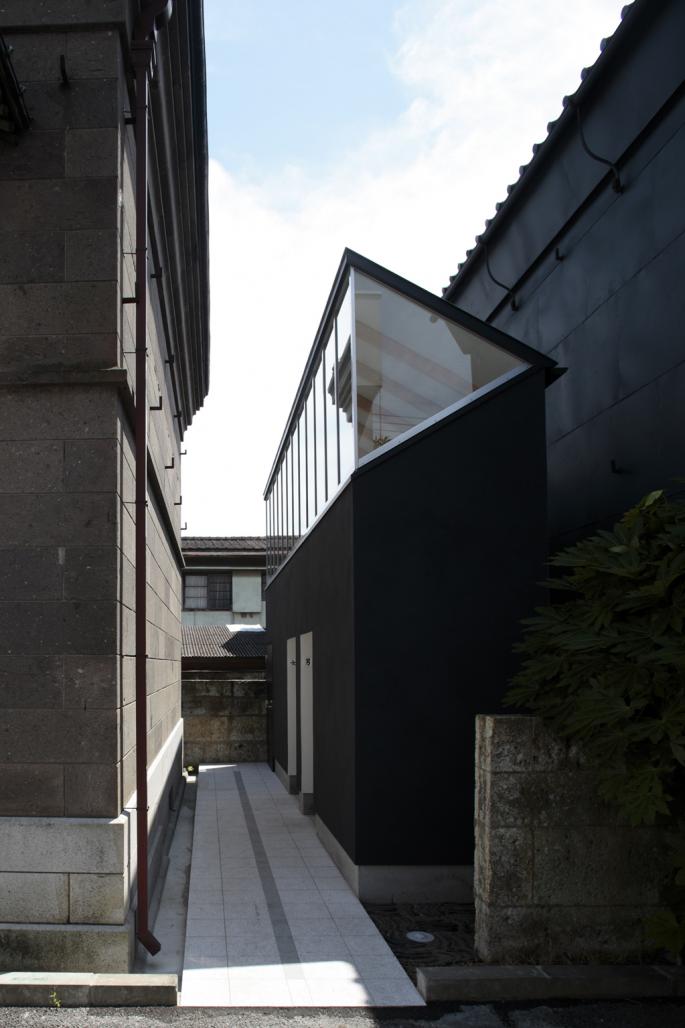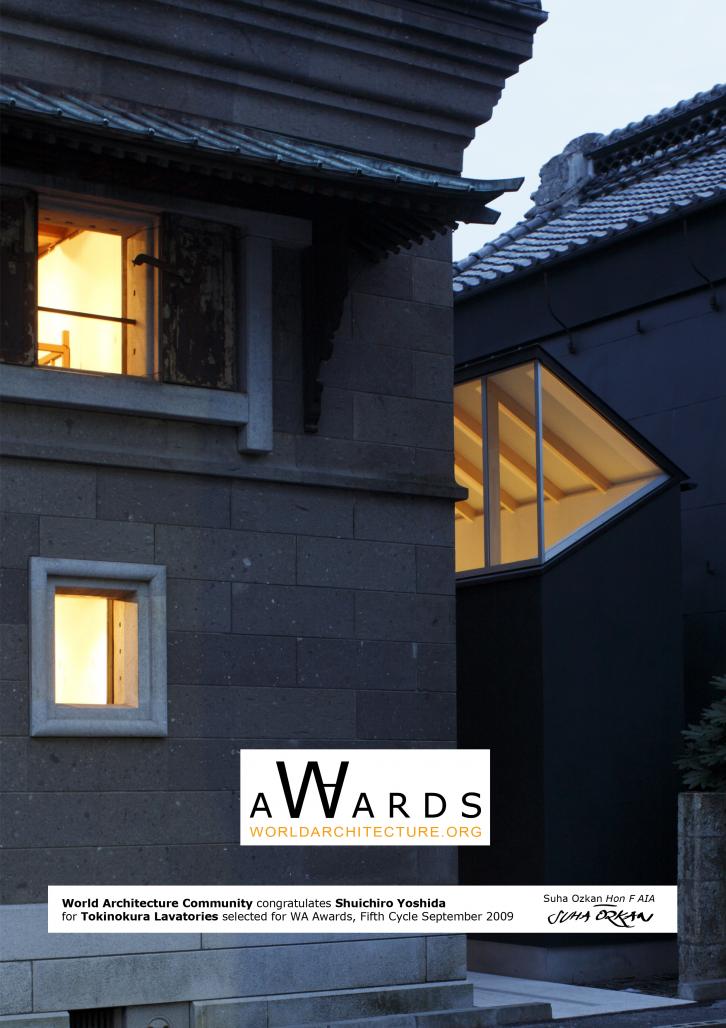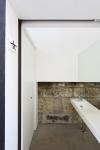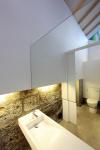The project is located in Chikusei City in Ibaraki Prefecture, approximately 60km north-east from Tokyo in Japan. In this region, there are historical storage buildings of stone since early 20th century, although the most of these buildings, called “Ishi-Kura” in Japanese, were demolished and disappeared from the townscape due to the city development after the World War II. A volunteer group in the region obtained one of the storage buildings and maintains it as their activity base for discovering the region-specific historical and cultural heritages. The building is named as Tokinokura, which means a storage persists in past and future. Although Tokinokura is in good condition and useful for the volunteer group, there was no toilet for the visitors and staffs. In autumn 2008, the group organized a public design competition for the toilet, which they desired for long time. This design was selected out of 76 applied design proposals and constructed in Feburary – May 2009.
This small toilet building includes two toilet booths for men and women. Although the floor area is only 8.62?, there is rich space above toilet booths. It is intended that the toilet starts new history with Tokinokura. It means not only to preserve the region-specific landscape but also to create new landscape in future. Visitors in the toilet booth could experience quiet and rich feeling, enjoying the soft light from the upper window and the framed view of the old stone wall of Tokinokura.
-structure
The floor of the building is 7.2m×1.2m rectangular shape and the height is approximately 4.5 m. Conventional timber structure is adopted and three bearing walls of plywood are placed in the transverse direction at the exterior walls and a partition between the women’s toilet booth and the storage space. There is no structural wall between the men’s and women’s booths, in order to share the sink and make the boundary ambiguous. Because a diaphragm condition is not expected at the roof level, lateral load due to wind is transferred by 6.0m span wind girders, which is fairly long for the conventional timber structures. A couple of timber sections are used for the girders and combined the girders and plywood could provide wide opening without columns to see the wall of Oya-stone behind the building.
-materials
Exterior wall finish: Black and elastic plasterer finish coordinating with the surrounding landscape.
Approach finish: White granite stone like the back wall material of Tokinokura.
Roof and window frame: Barium steel gull with black printing painted like the materials of covered wall in neighbor storage.
Materials of the interior space are as follows:
Wall finish : White plasterer finish of Japanese traditional material called “Shikkui”
which has humid conditioning and fire prevention. Many traditional, important architecture as Temple, Shrine, Castle in Japan finished this material on their walls.
Ceiling finish: Structural plywood painted and structure beam of laminated timber
Floor finish: mortar finish with clear painted
2008
2009
Tokinokura lavatories by shuichiro yoshida in Japan won the WA Award Cycle 5. Please find below the WA Award poster for this project.

Downloaded 113 times.
Favorited 3 times




.jpg)

.jpg)
.jpg)


.jpg)
